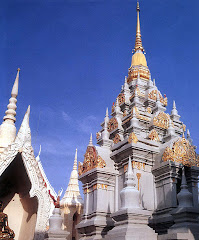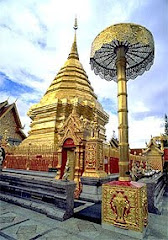King Si Inthrathit and King Ramkhamhaeng were both warrior kings and extended their territories far and wide. Their successors, however, could not maintain such a far-flung empire. Some of these later kings were more remarkable for their religious piety and extensive building activities than for their warlike exploits. An example of this type of Buddhist ruler was King Mahathammaracha Lithai, believed to have been the compiler of the Tribhumikatha, an early Thai book on the Buddhist universe or cosmos. The political decline of Sukhothai was, however, not wholly owing to deficiencies in leadership. Rather it resulted from the emergence of strong Thai states further south, whose political and economic power began to challenge Sukhothai during the latter half of the 14th century. These southern states, especially Ayutthaya, were able to deny Sukhothai access to the area.
The Sukhothai kingdom did not die a quick death. Its decline lasted from the mid-14th until the 15th century. In 1378, the Ayutthaya King Borommaracha I subdued Sukhothai's frontier city of Chakangrao [Kamphaengphet], and henceforth Sukhothai became a tributary state of Ayutthaya. Sukhothai later attempted to break loose from Ayutthaya but with no real success, until in the 15th century it was incorporated into the Ayutthaya kingdom as a province. The focus of Thai history and politics now moved to the central plains of present-day Thailand, where Ayutthaya was establishing itself as a centralized state, its power outstripping not only Sukhothai but also other neighbouring states such as Suphannaphum and Lawo [Lopburi]source: www.dhammathai.org
Technorati tags : Sukhothai Period /Thailand Temple/Buddhism /thai temple









No comments:
Post a Comment